The story of the United States is anything but boring—it’s a thrilling ride filled with bold decisions, unexpected twists, and moments that changed the course of history forever.
From revolutionary beginnings to the rise of global influence, each chapter in America’s journey has left its unique mark.
Some events sparked movements that redefined freedom and equality, while others propelled innovation, inspired generations, or even caused a bit of chaos along the way.
These aren’t just dates in a history book—they’re the moments that shaped the very fabric of the nation we know today. Buckle up as we dive into 25 historic moments that made America, well, America!
Signing of the Declaration of Independence
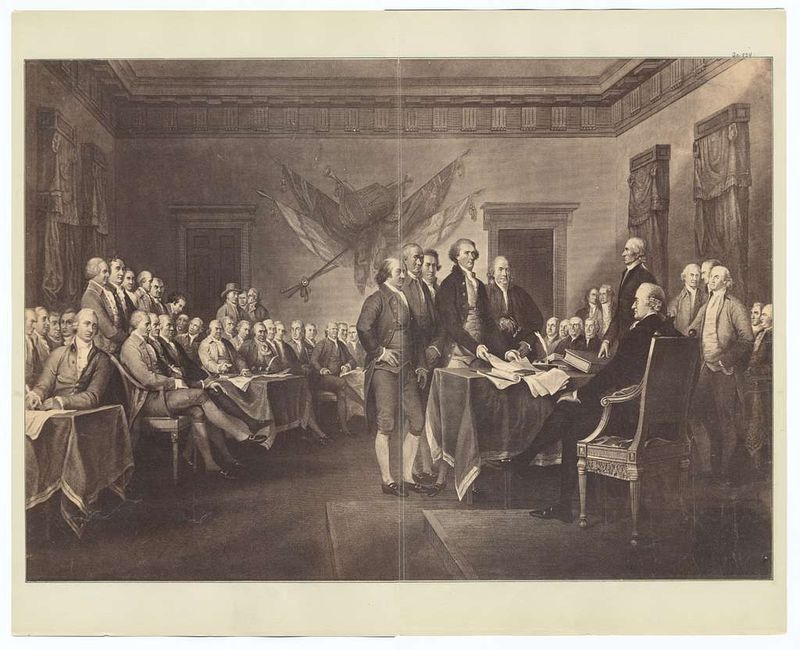
On July 4, 1776, the Continental Congress convened in Philadelphia to approve the Declaration of Independence. This marked a monumental step as thirteen American colonies declared independence from British rule.
The document, primarily authored by Thomas Jefferson, articulated the colonies’ reasons for seeking freedom, emphasizing inherent rights to life, liberty, and the pursuit of happiness.
This declaration not only spurred the Revolutionary War but also laid the groundwork for the United States’ democratic ideals. It was a defining moment that rallied the colonies and established a new nation based on freedom and equality principles.
Ratification of the U.S. Constitution
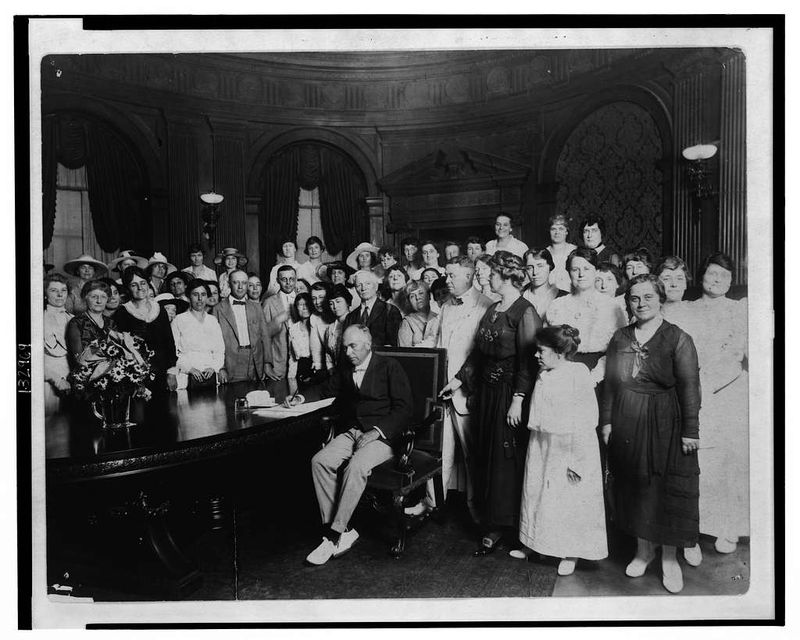
In 1787, delegates gathered at the Constitutional Convention in Philadelphia to create a robust governing framework for the United States.
The result was the U.S. Constitution, a document outlining the nation’s fundamental laws and principles. It replaced the Articles of Confederation, addressing weaknesses and establishing a system of checks and balances.
The Constitution’s ratification in 1788 was a turning point, ensuring the stability and governance structure of the new nation. It signified a commitment to democracy and the rule of law, influencing countless other nations striving for democratic governance.
The Louisiana Purchase
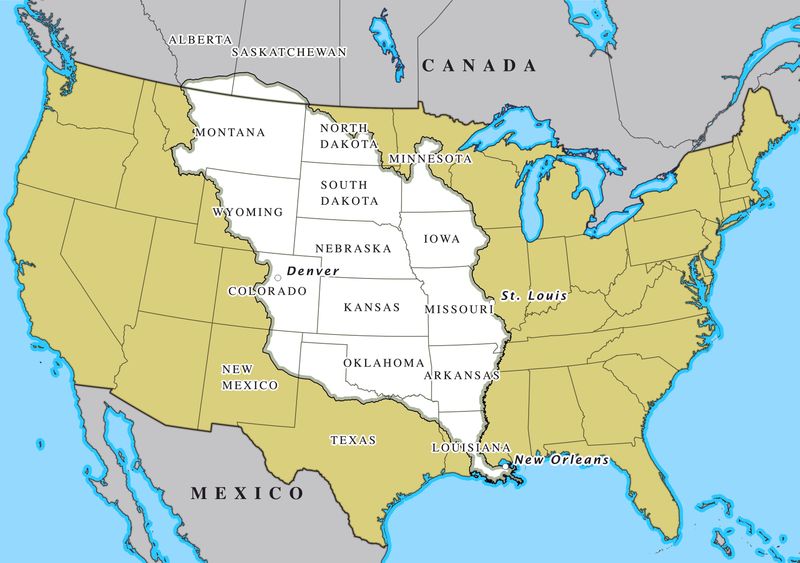
The Louisiana Purchase of 1803 was a massive land acquisition that doubled the size of the United States.
President Thomas Jefferson negotiated the deal with France, acquiring approximately 827,000 square miles of territory west of the Mississippi River for $15 million.
This purchase opened vast tracts of land for settlement and exploration, fueling the nation’s expansionist vision known as “Manifest Destiny.” It also secured American control over the Mississippi River, which was vital for trade.
The purchase underscored the young nation’s growing ambition and set the stage for its westward expansion.
The Lewis and Clark Expedition
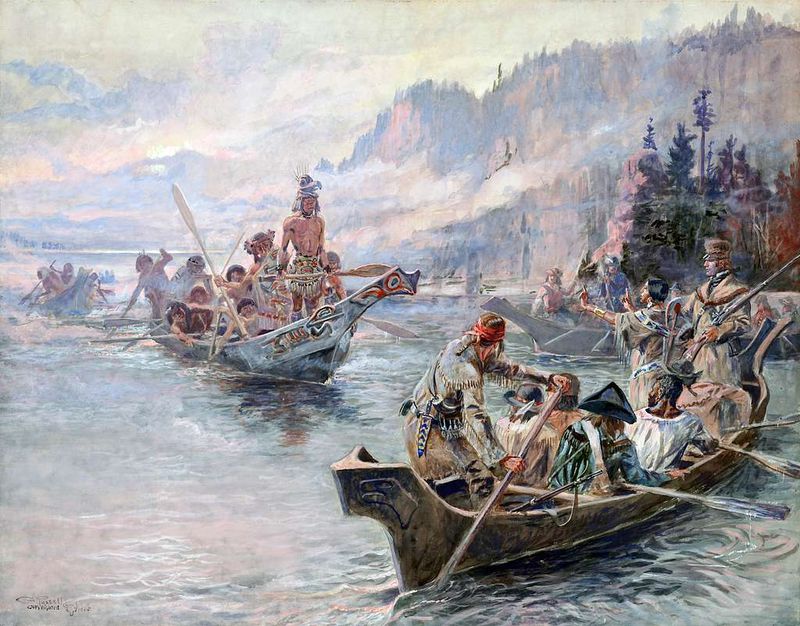
Commissioned by President Jefferson, the Lewis and Clark Expedition of 1804-1806 was a seminal journey that explored the unknown western territories acquired in the Louisiana Purchase.
Meriwether Lewis and William Clark led the expedition, documenting the diverse flora, fauna, and indigenous cultures they encountered. This exploration provided valuable geographic and scientific data, paving the way for future settlements and trade routes.
The expedition also strengthened U.S. claims to Oregon territories, highlighting the nation’s spirit of discovery and expansion. It was a pivotal moment that broadened Americans’ understanding of their continent’s vast possibilities.
The War of 1812
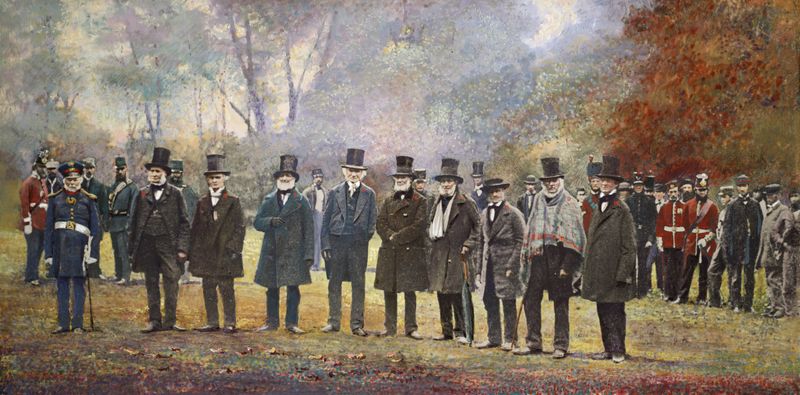
The War of 1812, often called the “Second War of Independence,” was a conflict between the United States and Great Britain.
Triggered by maritime disputes and British support of Native American attacks on American settlements, the war tested the young nation’s resilience. Notable events include the British burning of Washington, D.C., and the defense of Fort McHenry, which inspired “The Star-Spangled Banner.”
The war concluded with the Treaty of Ghent in 1814, restoring pre-war boundaries. It fostered a sense of national pride and unity, shaping America’s identity and confirming its sovereignty on the global stage.
The Monroe Doctrine
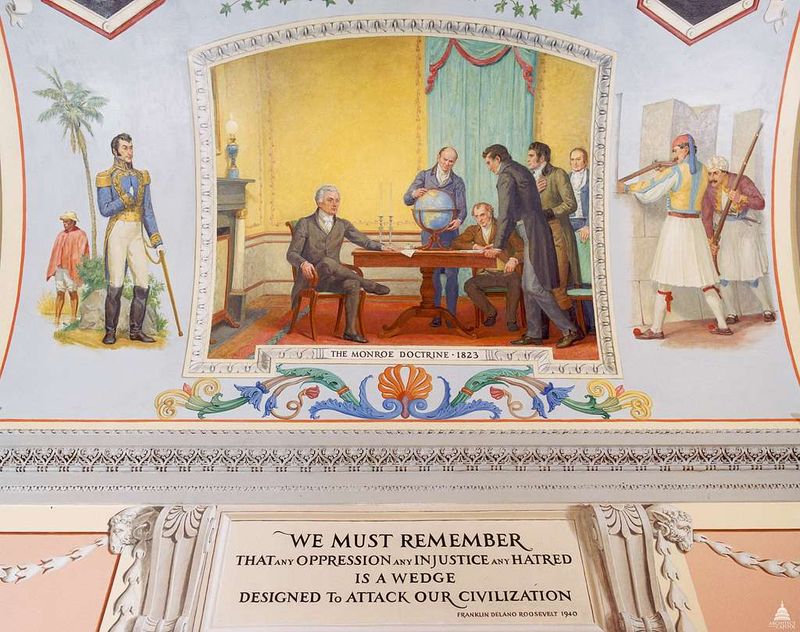
Proclaimed in 1823, the Monroe Doctrine was a significant foreign policy statement by President James Monroe. It declared that any European intervention in the Americas would be viewed as an act of aggression, prompting U.S. intervention.
This doctrine asserted the Western Hemisphere as U.S. influence sphere, deterring European colonial ambitions. It marked a defining moment in U.S. diplomacy, shaping future foreign policy decisions and establishing the nation as a protector of the Americas.
The Monroe Doctrine’s enduring legacy influenced American interactions with neighboring countries and underscored its emerging role as a regional power.
The Trail of Tears
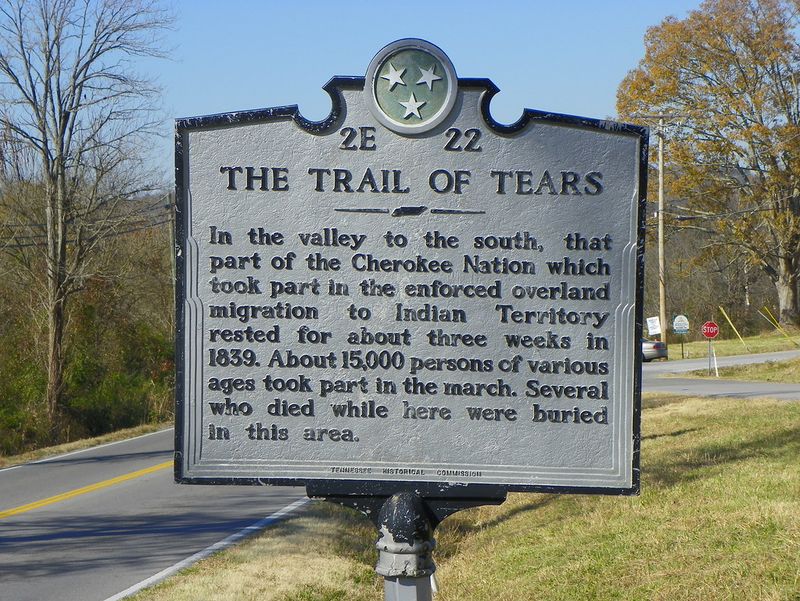
The Trail of Tears refers to the forced relocation of Cherokee and other Native American tribes from their ancestral lands in the southeastern United States to designated Indian Territory in present-day Oklahoma.
This 1838-1839 journey resulted from the Indian Removal Act of 1830, signed by President Andrew Jackson. The relocation led to widespread suffering and death, with thousands of Native Americans perishing along the way due to disease, exposure, and starvation.
This tragic event highlighted the severe impact of U.S. expansion policies on indigenous populations and remains a somber chapter in American history.
The Seneca Falls Convention
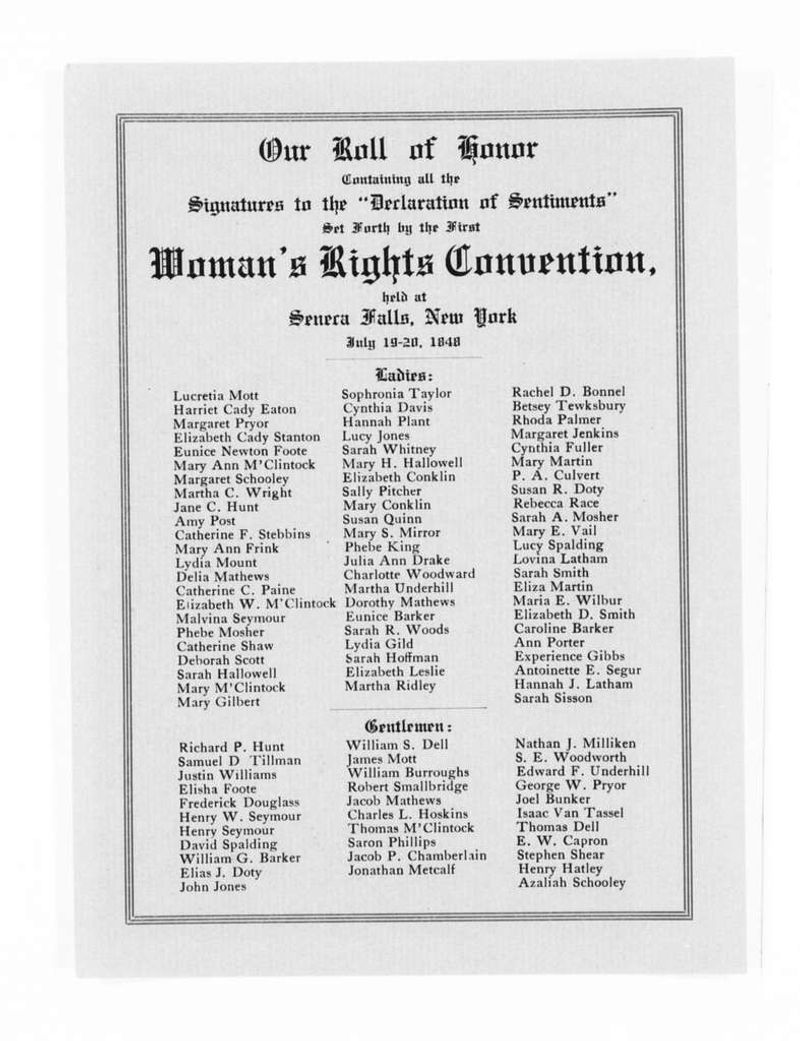
Held in 1848 in Seneca Falls, New York, the Seneca Falls Convention was the first women’s rights convention in the United States. Organized by Elizabeth Cady Stanton and Lucretia Mott, it gathered activists to address women’s social, civil, and religious conditions.
The convention produced the Declaration of Sentiments, a document demanding equal rights for women, including suffrage.
This landmark event ignited the women’s rights movement, challenging societal norms and advocating for gender equality.
It set the stage for future advancements in women’s rights, influencing generations of activists and reshaping American society.
The California Gold Rush
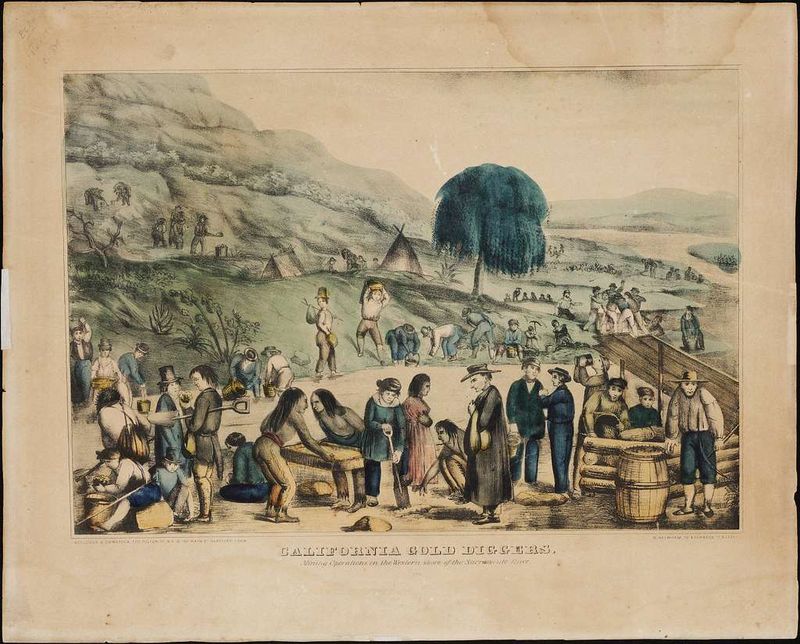
The California Gold Rush of 1849 was a transformative event that attracted thousands to the American West in pursuit of wealth. The discovery of gold at Sutter’s Mill sparked a mass migration, with prospectors, known as “forty-niners,” flocking to California.
This rush dramatically increased the population, leading to California’s rapid statehood in 1850. It spurred economic growth and development, establishing San Francisco as a major city.
However, it also led to significant environmental damage and displacement of Native American communities. The Gold Rush epitomized the American dream of prosperity and opportunity, shaping the West’s cultural and economic landscape.
The Civil War
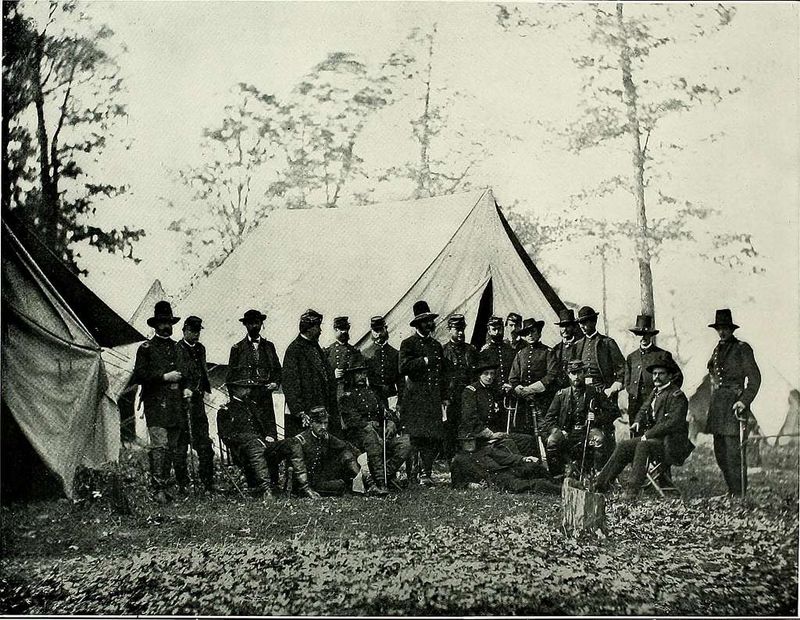
The American Civil War, fought from 1861 to 1865, was a defining conflict in U.S. history. It arose from tensions over slavery, states’ rights, and economic disparities between the North and South.
The war resulted in significant loss of life and destruction but ultimately led to the abolition of slavery with the Thirteenth Amendment. Key battles, such as Gettysburg and Antietam, and President Abraham Lincoln’s leadership, were pivotal.
The Civil War reshaped the nation’s political, social, and economic landscape, reinforcing the principles of federal authority and equality, and addressing deep-seated issues that had long divided the nation.
The Emancipation Proclamation
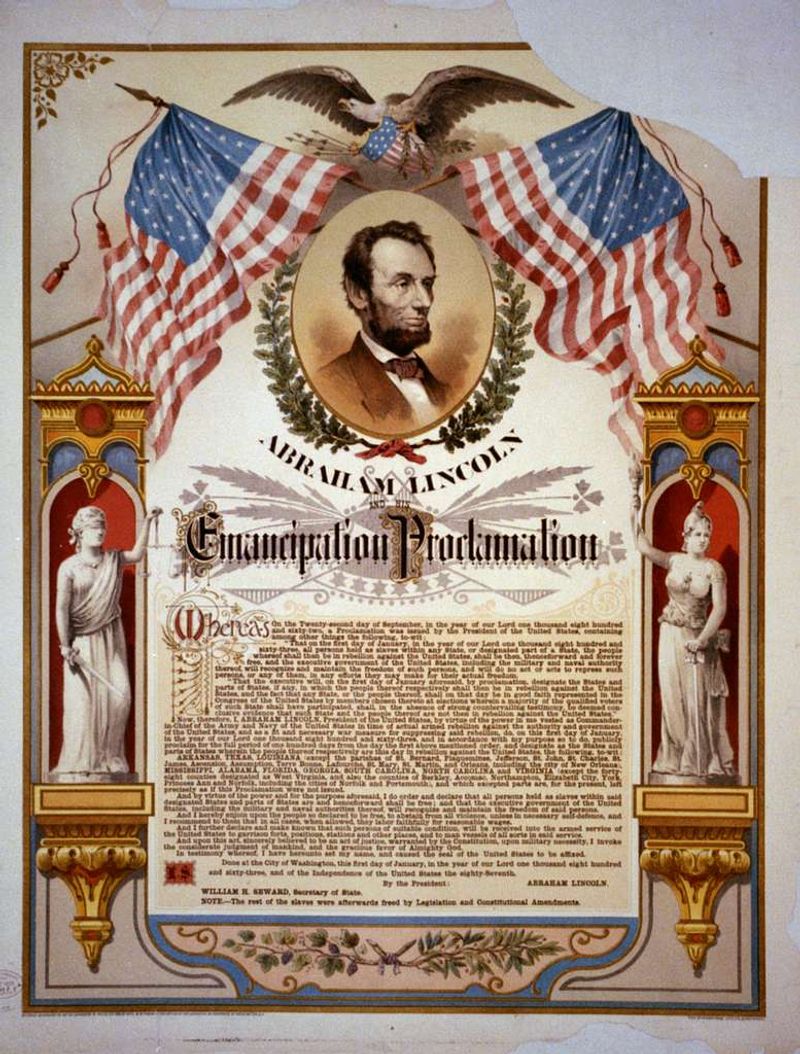
Issued by President Abraham Lincoln on January 1, 1863, the Emancipation Proclamation declared the freedom of all enslaved people in Confederate-held territory.
Although it did not immediately free all enslaved individuals, it was a crucial step toward abolishing slavery nationwide. The proclamation shifted the Civil War’s focus to a struggle for human freedom, garnering support for the Union cause and preventing European powers from recognizing the Confederacy.
It paved the way for the Thirteenth Amendment, which abolished slavery in the United States. Lincoln’s bold move was a turning point in American history, symbolizing a commitment to equality and justice.
The Transcontinental Railroad Completion
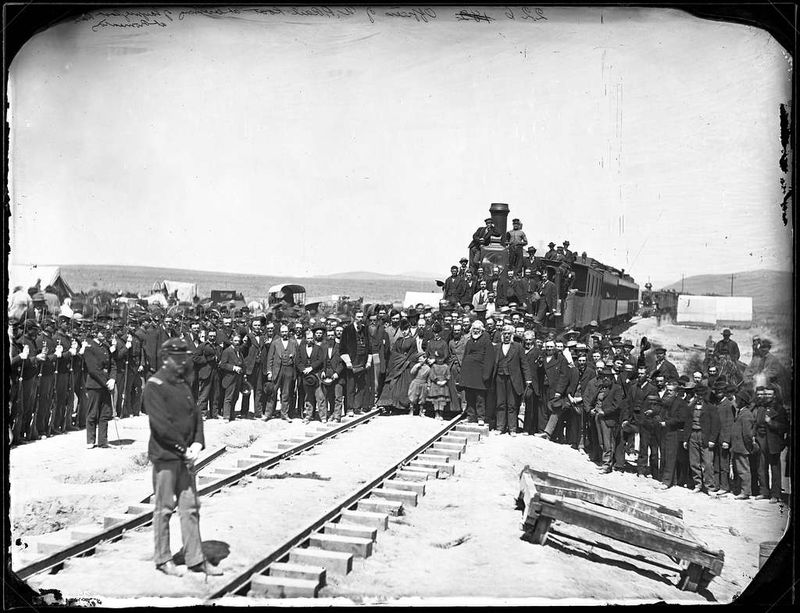
The completion of the Transcontinental Railroad in 1869 was a monumental achievement that connected the eastern and western United States.
The Union Pacific and Central Pacific Railroads met at Promontory Summit, Utah, symbolized by the ceremonial driving of the “Golden Spike.” This engineering marvel revolutionized transportation, reducing cross-country travel time from months to days.
It facilitated trade, immigration, and the movement of goods and people, contributing to the nation’s economic growth.
The railroad also played a role in westward expansion, promoting settlement in the western territories. It was a pivotal moment that transformed America’s landscape and economy.
The Women’s Suffrage Movement
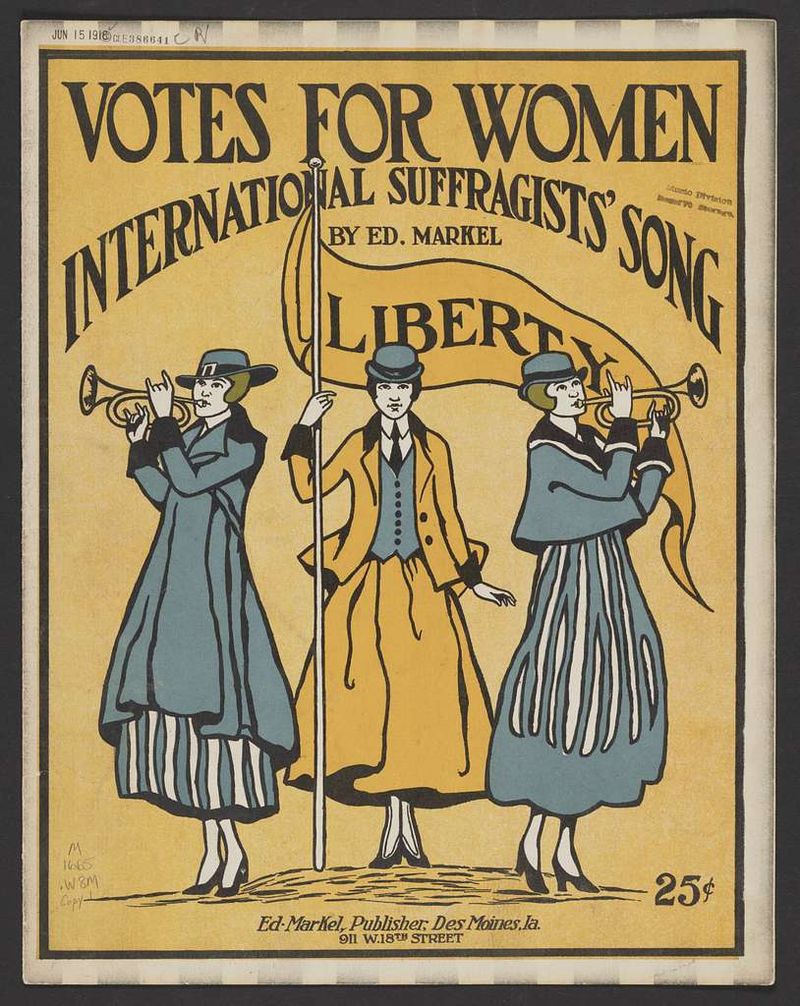
The women’s suffrage movement was a decades-long struggle to secure voting rights for women in the United States. It culminated in the ratification of the Nineteenth Amendment in 1920, granting women the right to vote.
Activists like Susan B. Anthony, Elizabeth Cady Stanton, and Alice Paul were instrumental in this fight, organizing rallies, marches, and lobbying efforts. The movement faced significant opposition but persevered, achieving a monumental victory for gender equality.
The success of the suffrage movement was a turning point in American history, expanding democratic rights and inspiring future generations of activists to continue the pursuit of equality.
The Great Depression
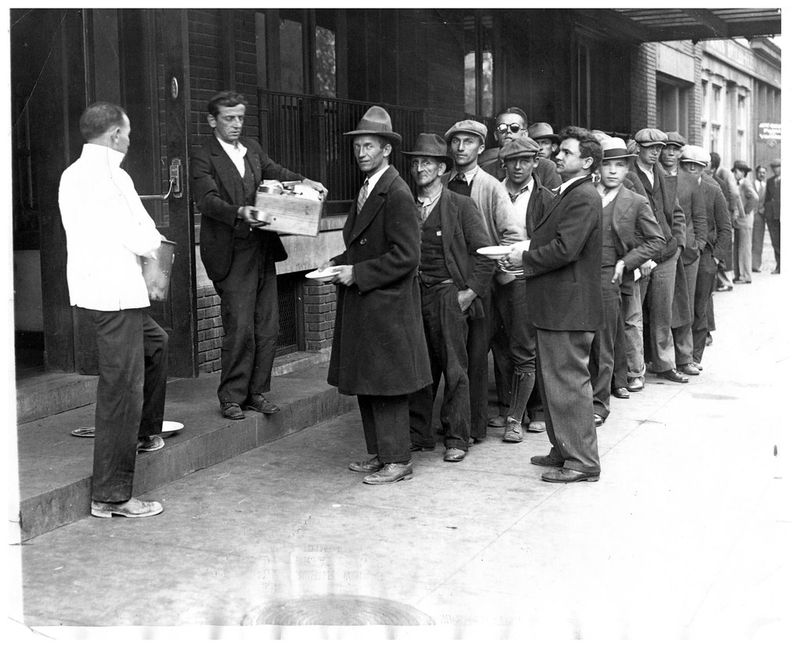
The Great Depression of the 1930s was a severe economic downturn that affected millions in the United States and worldwide. Triggered by the 1929 stock market crash, it led to widespread unemployment, poverty, and business failures.
The Dust Bowl exacerbated rural suffering, forcing many to migrate westward. President Franklin D. Roosevelt’s New Deal programs aimed to provide relief, recovery, and reform, introducing social safety nets and regulatory measures.
The Great Depression reshaped American economic policies and attitudes towards government intervention. It highlighted the need for a balanced approach to economic growth and social welfare, lessons that resonate today.
World War II and the United States
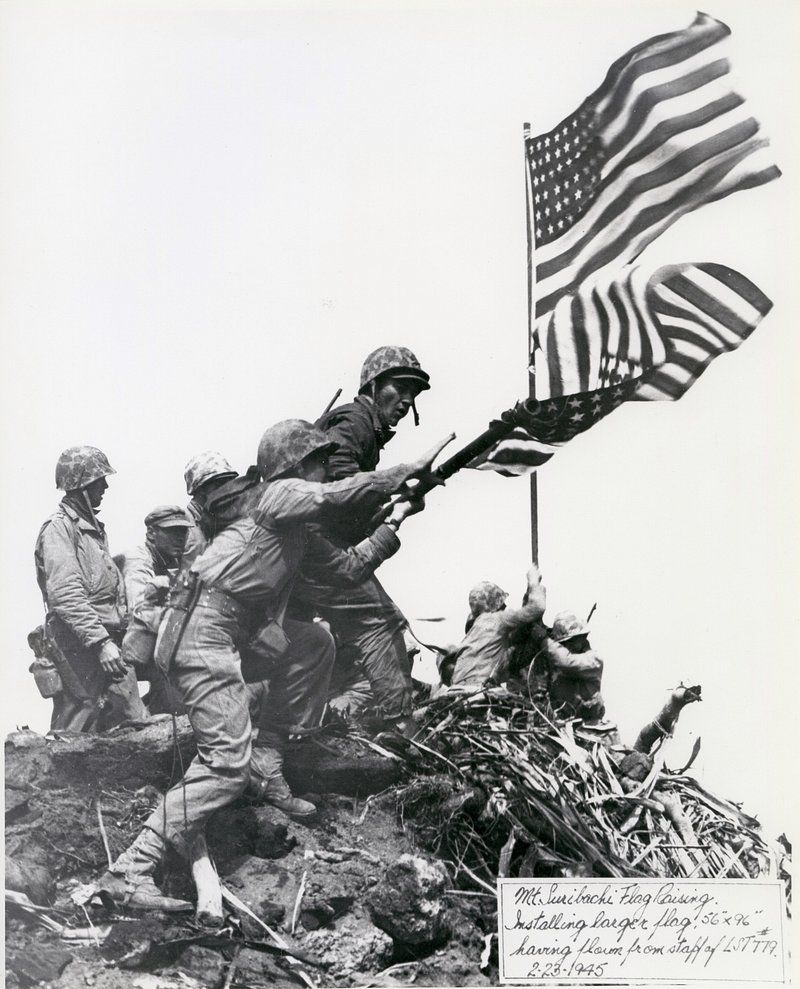
World War II was a defining conflict for the United States, marking its emergence as a global superpower. Initially remaining neutral, the U.S. entered the war after the Japanese attack on Pearl Harbor in 1941. American forces played crucial roles in both the European and Pacific theaters, contributing to the defeat of Axis powers. The war effort unified the nation, with significant contributions from industries and civilians on the home front. It also spurred technological advancements and social changes, including increased roles for women and minorities in the workforce. World War II shaped America’s foreign policy, economy, and society.
The Civil Rights Movement
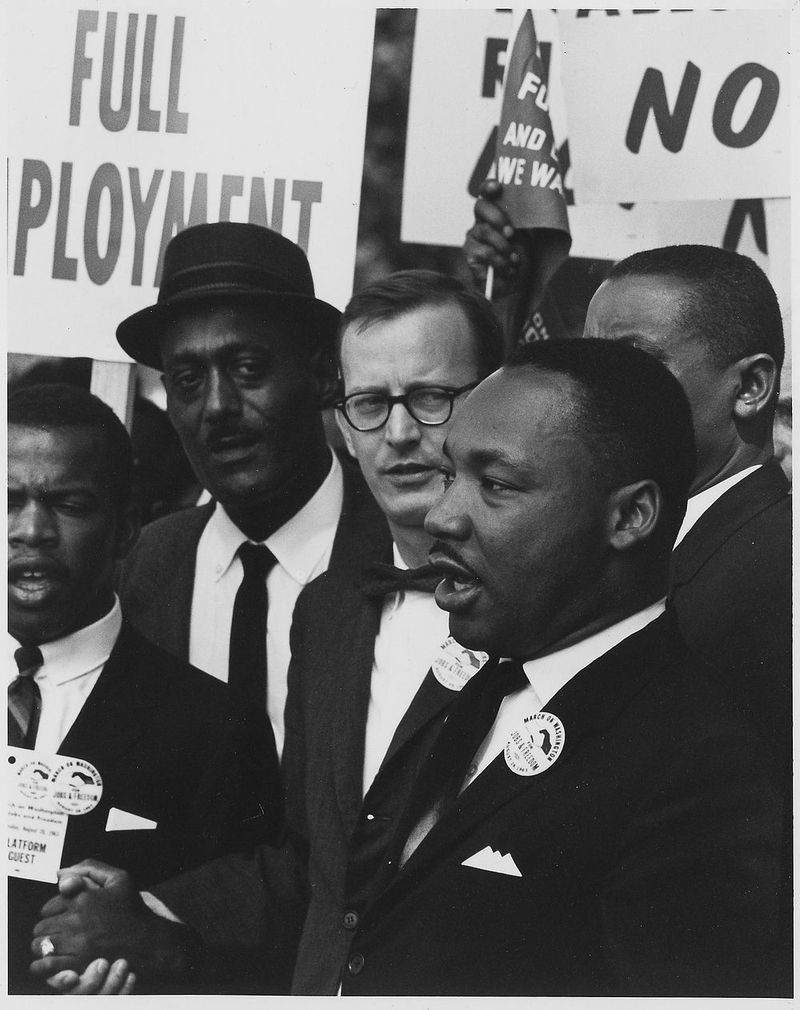
The Civil Rights Movement of the 1950s and 1960s was a pivotal struggle for racial equality and justice in the United States. It aimed to end segregation and discrimination against African Americans, challenging unjust laws and practices.
Prominent leaders like Martin Luther King Jr., Rosa Parks, and Malcolm X spearheaded efforts through peaceful protests, boycotts, and legal challenges. Landmark legislation, such as the Civil Rights Act of 1964 and the Voting Rights Act of 1965, were significant achievements.
The movement reshaped American society, fostering greater awareness and progress towards racial equality, and inspiring future generations to advocate for social justice.
The Moon Landing
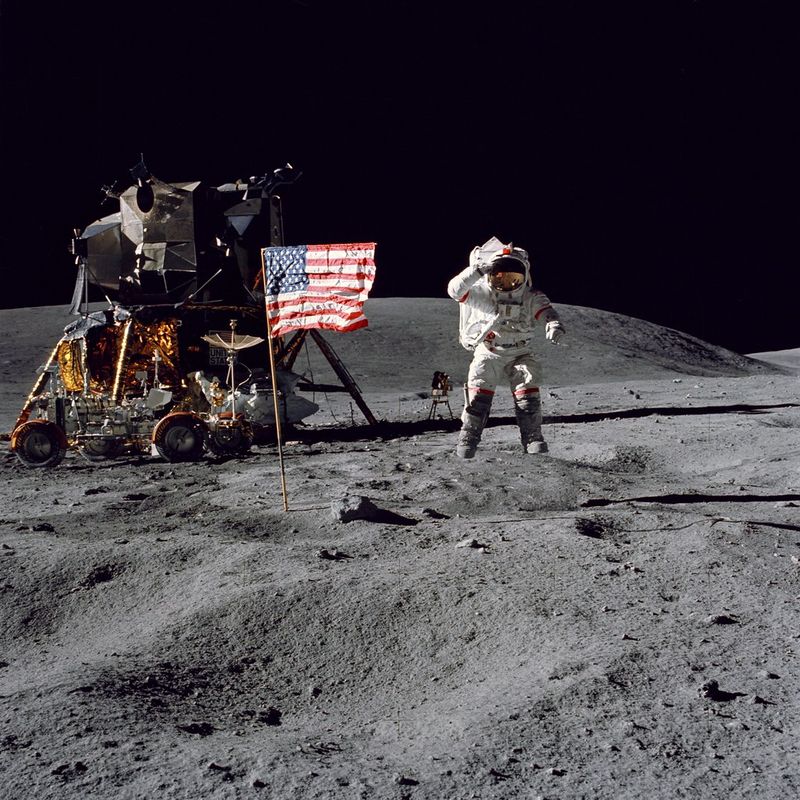
On July 20, 1969, the world watched as Apollo 11 astronauts Neil Armstrong and Buzz Aldrin became the first humans to walk on the moon. Armstrong’s iconic words, “That’s one small step for man, one giant leap for mankind,” symbolized the culmination of a decade-long effort known as the Space Race.
This achievement showcased American ingenuity and technological prowess, marking a significant victory in the Cold War rivalry with the Soviet Union. The moon landing inspired generations to pursue scientific endeavors and explore the cosmos, emphasizing the limitless possibilities of human achievement and exploration.
The Vietnam War
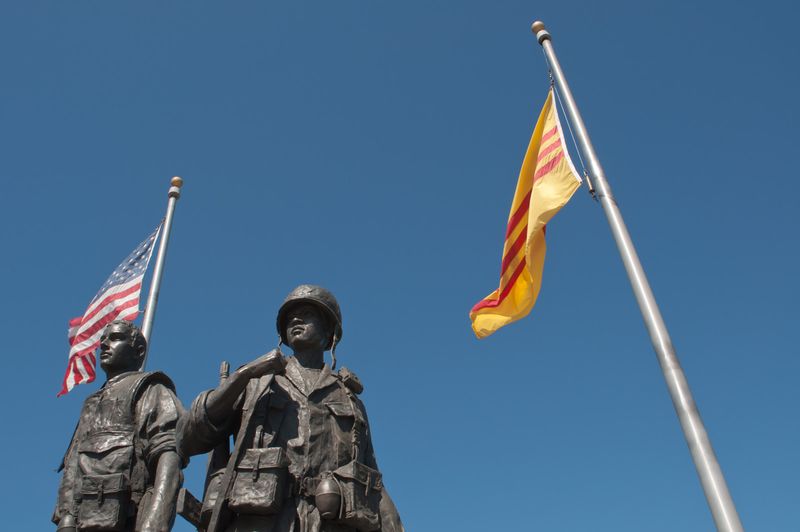
The Vietnam War, spanning from 1955 to 1975, was a contentious and polarizing conflict that deeply affected the United States.
Involving military intervention in Vietnam to prevent the spread of communism, the war faced increasing opposition at home. Protests and demonstrations, particularly among young Americans, highlighted societal divisions and questioned U.S. foreign policy.
The war ended with the fall of Saigon in 1975, leading to a reevaluation of America’s role in world affairs. The Vietnam War left a lasting impact on veterans and the nation, influencing military strategy, foreign policy, and public perception of government actions.
The Watergate Scandal

The Watergate scandal was a major political scandal in the 1970s involving illegal activities by members of President Richard Nixon’s administration.
It began with a break-in at the Democratic National Committee headquarters at the Watergate complex and led to revelations of widespread abuse of power. Investigative journalism, particularly by The Washington Post, uncovered the extent of the cover-up, leading to Nixon’s resignation in 1974.
The scandal resulted in increased skepticism towards government and reforms aimed at transparency and accountability. Watergate had a profound impact on American politics, reinforcing the importance of checks and balances in a democratic system.
The End of the Cold War
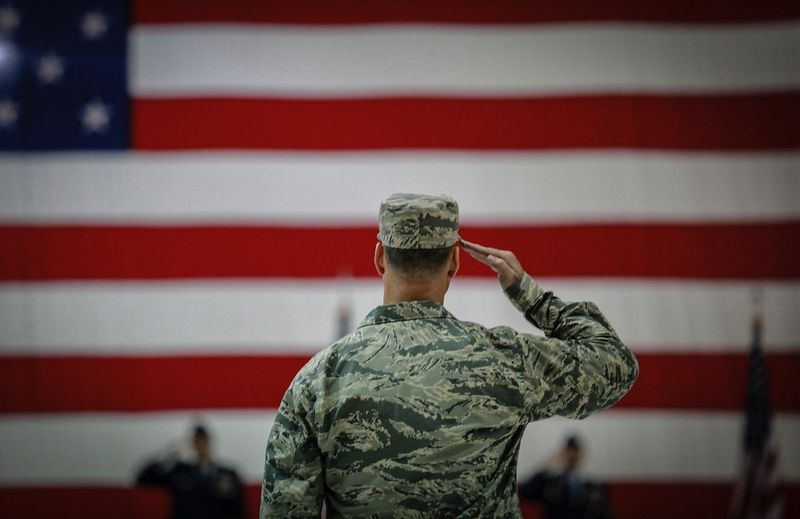
The end of the Cold War in 1989 marked a significant shift in global geopolitics, with the United States emerging as the sole superpower. This period saw the easing of tensions between the U.S. and the Soviet Union, culminating in the fall of the Berlin Wall and the dissolution of the Soviet Union in 1991.
Diplomatic efforts by leaders like President Ronald Reagan and Soviet Premier Mikhail Gorbachev played crucial roles. The end of the Cold War reshaped international relations, promoting cooperation and peace. It also highlighted the effectiveness of diplomacy and negotiation in resolving global conflicts.
The September 11 Attacks

On September 11, 2001, the United States faced one of its darkest days as terrorists hijacked four planes, crashing them into the World Trade Center towers, the Pentagon, and a Pennsylvania field. The attacks resulted in nearly 3,000 deaths and prompted a global response against terrorism.
The events of 9/11 led to significant changes in U.S. domestic and foreign policies, including the creation of the Department of Homeland Security and the War on Terror. The attacks left a profound impact on the nation, reshaping national security, altering international relations, and uniting Americans in grief and resolve.
The Election of Barack Obama
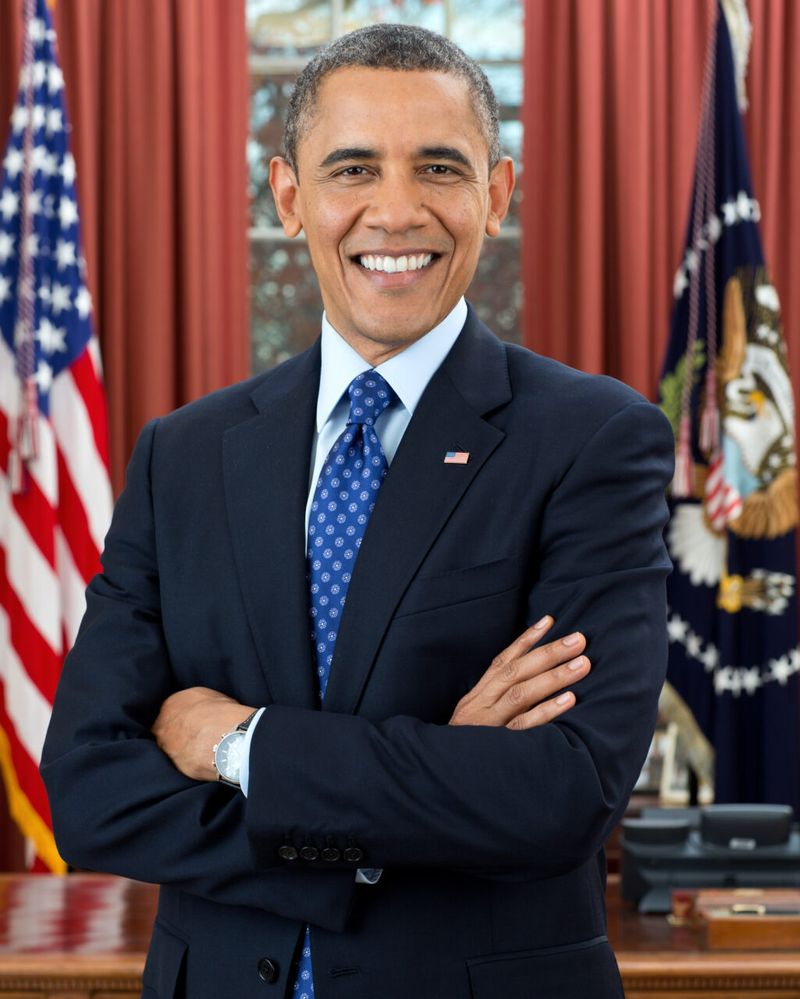
In 2008, Barack Obama made history by becoming the first African American elected President of the United States. His campaign, centered on hope and change, resonated with millions, drawing support from a diverse coalition of voters.
Obama’s election was a milestone in American racial and political history, symbolizing progress in racial equality and inspiring future generations. His presidency focused on healthcare reform, economic recovery, and international diplomacy.
The election of Barack Obama marked a new chapter in American politics, reflecting the nation’s evolving attitudes towards race and leadership, and highlighting the power of inclusive and transformative governance.
The Legalization of Same-Sex Marriage

On June 26, 2015, the United States Supreme Court legalized same-sex marriage nationwide in the landmark case Obergefell v. Hodges.
This decision was a significant victory for LGBTQ+ rights, affirming that marriage is a fundamental right for all Americans. The ruling marked the culmination of decades of advocacy, challenging discriminatory laws and societal norms. It underscored the importance of equality and justice, promoting acceptance and inclusivity.
The legalization of same-sex marriage was a transformative moment in American history, reflecting the nation’s commitment to civil rights and inspiring continued efforts towards LGBTQ+ equality and social justice.
The COVID-19 Pandemic

The COVID-19 pandemic, which began in late 2019, has profoundly impacted the United States and the world. The virus led to widespread illness, loss of life, and economic disruptions.
In response, the U.S. implemented measures such as lockdowns, social distancing, and vaccination campaigns. The pandemic highlighted vulnerabilities in public health systems and underscored the importance of scientific research and global cooperation.
It also accelerated changes in work, education, and technology. The COVID-19 pandemic serves as a reminder of the resilience and adaptability required to address global challenges, shaping future approaches to health and crisis management.
